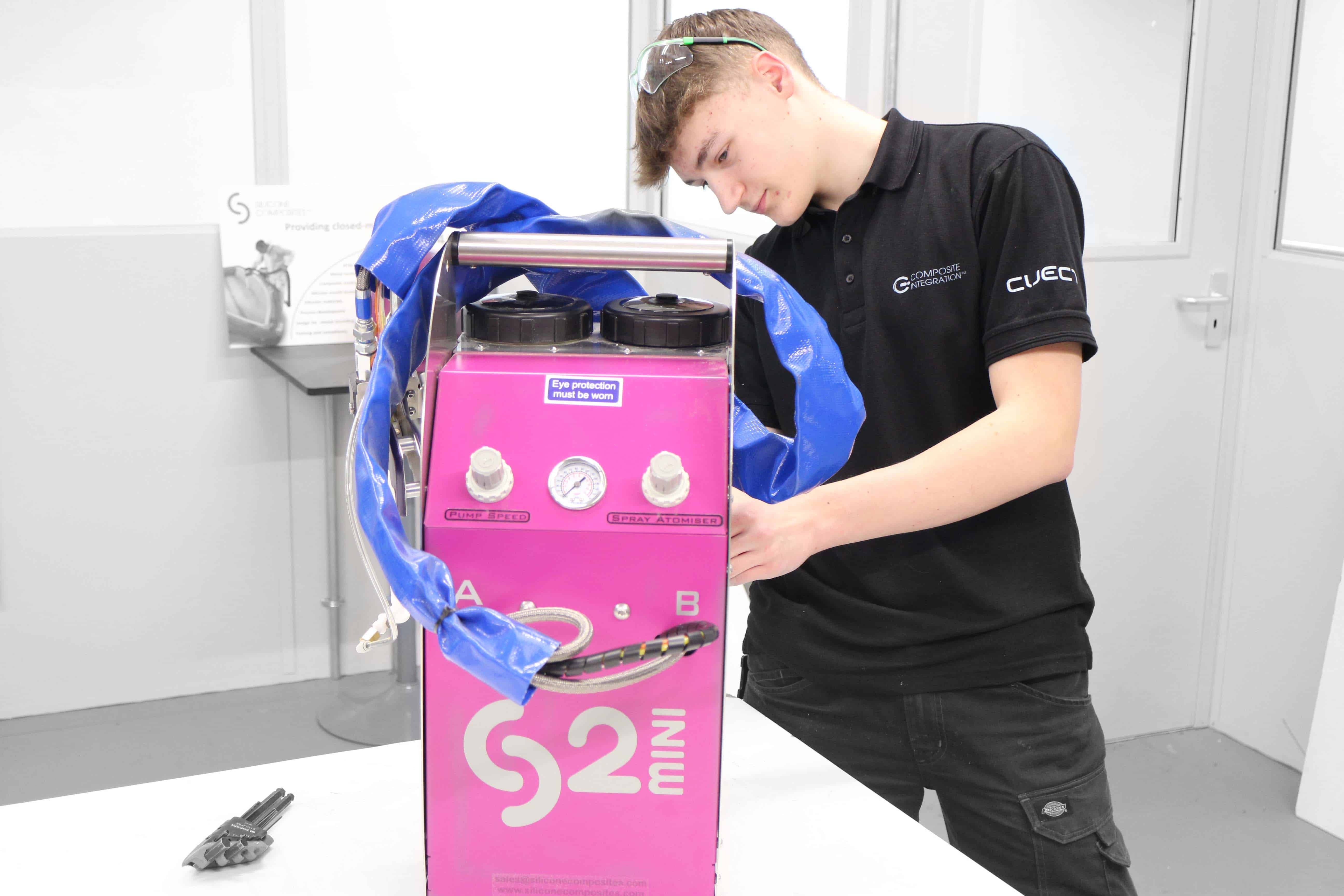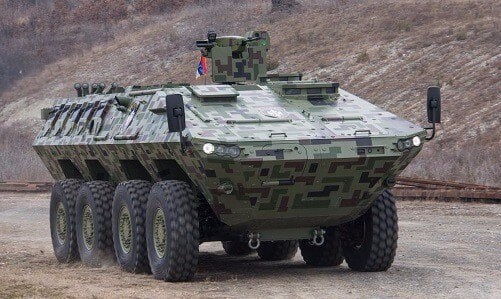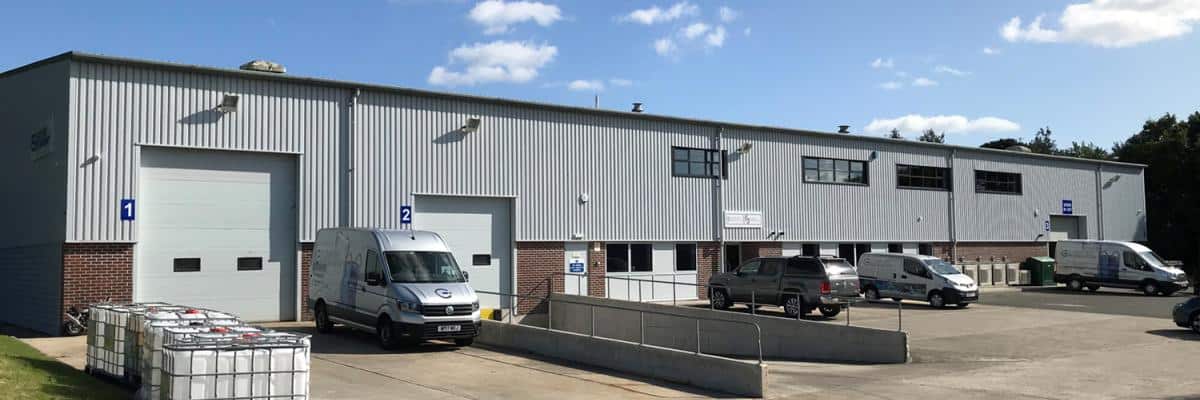For decades, autoclaved prepreg has been the undisputed benchmark in aerospace composites. But as the industry faces mounting pressure to scale production, reduce emissions and control costs, all while maintaining uncompromising quality — there is a new contender rising to meet the challenge: liquid resin.
In a pivotal whitepaper titled Liquid Resin: The Journey Towards Future Aircraft Structures, Composite Integration presents a compelling argument for liquid composite moulding as a viable and, in many respects, superior alternative to traditional methods. From propellers to thrust reversers, nacelles to demonstrator wings, the evidence is increasingly clear. Resin Transfer Moulding (RTM) and Resin Infusion (RI) are not only capable of meeting aerospace-grade requirements, they are ready to reshape the industry’s manufacturing playbook.
So what’s driving this change?
A Sector Under Pressure
The aviation world stands at a critical turning point. Demand for commercial aircraft continues to soar, with Airbus alone holding a backlog of nearly 9,000 aircraft. Simultaneously, emerging electric vertical take-off and landing (eVTOL) companies like Vertical Aerospace are forecasting even higher production volumes — up to 300 aircraft per month. That scale demands a shift in how we build composite structures.
Traditional prepreg and autoclave methods, while proven in quality, are slow, expensive and highly energy-intensive. They simply
do not scale to the volumes or meet the sustainability targets modern aerospace manufacturing now demands. Composite Integration argues that liquid resin processes, with faster cycle times, lower energy footprints, and proven quality metrics, are the answer.
Quality Without Compromise
The standout message from Composite Integration’s research is that liquid resin processes can now deliver the same exceptional laminate quality as prepreg methods, while offering significant reductions in cost, weight and energy usage.
Through years of internal development and collaborative industry programmes, including projects with Safran Nacelles,
GKN Aerospace and Dowty Propellers, the company has refined a rigorous, data-led methodology for RTM and Resin Infusion. The result? Laminates with fibre volume fractions close to 60% and virtually zero void content, consistently produced at scale.
In real terms, this translates to demonstrator components like business jet thrust reversers and nacelle skins that not only meet stringent aerospace standards but also outperform traditional parts in terms of environmental impact. One prototype even showed a 60% reduction in carbon footprint over its prepreg counterpart.
Process Science Meets Practical Automation
While much of the industry still debates the finer points of resin pressure regimes and membrane strategies, Composite Integration has developed the tools to take the guesswork out of liquid resin moulding.
Their CIJECT range of machines is the beating heart of this transformation. Designed with precision process control in mind, CIJECT systems manage every aspect of the moulding cycle, from resin degassing and temperature control to real- time pressure regulation and digital logging. Crucially, they do so with software-driven automation that makes complex processes accessible to operators, reducing the chance of error and ensuring consistency from part to part.
Pressure accuracy within a few millibars. Resin flow monitored and adjusted in real- time. Automated process steps that can be programmed and repeated at scale. These are not theoretical capabilities; they are features already embedded into machines supporting major aerospace production lines today.
And the infrastructure around these machines is just as important. Composite Integration has invested heavily in tools for fabric permeability measurement, ply compression analysis and bubble quantification, giving engineers real-world data to guide design and process choices.
‘One prototype even showed a 60% reduction in carbon footprint over its prepreg counterpart.’
The RTM Renaissance
Resin Transfer Moulding is not new, but its industrialisation for aerospace at scale is
a frontier few have conquered. Composite Integration’s work with RTM presses and closed-mould automation has yielded impressive results, particularly in the production of propeller blades and structural wing components.
Consider the Dowty Propellers programme, where high-performance components
are manufactured using over-braided dry preforms, injected over foam cores. With hundreds of thousands of flying hours,
these parts are proven in the sky. Now, the challenge is scaling that reliability to match the production demands of next-gen eVTOLs and regional aircraft.
Composite Integration’s response? Fully integrated RTM cells capable of producing multiple sophisticated mouldings every hour. These systems manage temperature, flow, injection ratios and even resin ageing, logging every variable in real-time. They also feature advanced resin management strategies, including non-vented injection and tight tolerance process envelopes.
Rethinking Resin Infusion
While RTM handles closed-mould precision, Resin Infusion offers flexibility and scalability. And contrary to outdated perceptions, it
can now achieve the fibre fractions, weight savings and quality metrics required for high- performance flight parts.
During the ProPound project with Safran Nacelles, Composite Integration helped define critical Resin Infusion parameters for aerospace-grade laminates. The outcome was a tightly controlled process that eliminated the need for double-bagging or semi-permeable membranes. Instead, clear infusion strategies and custom consumables, combined with precise control over resin pressure and degassing, led to robust, repeatable results.
One standout example was the business jet thrust reverser skin, infused using Hexcel RTM6 resin, multi-axial carbon and lightning strike materials. It was not only lighter and greener than its prepreg counterpart, but also faster and more cost-effective to produce.
From TRL to Production
Perhaps most impressively, Composite Integration does not just build machines, they support an entire ecosystem of composite development. From early-stage R&D and demonstrator part production to full-scale manufacturing cells, the company’s team works closely with customers across all technology readiness levels.
A typical large-scale liquid resin infusion machine for aerospace applications capable of either Resin Infusion or Resin Transfer Moulding.
It is this integrated approach, combining material science, process engineering and turnkey automation, that enables successful transitions from concept to production. With partners spanning aerospace, wind energy and marine sectors, Composite Integration brings a uniquely cross-sector perspective to problem-solving. And crucially, we are not standing still.
Ongoing developments include enhanced degassing technologies, in-house permeability characterisation tools and support for 2K resin systems with advanced ratio verification. These are the kinds of innovations that will power the next generation of lightweight, high-performance and environmentally responsible aircraft.
The Future is Liquid
As demand grows and sustainability becomes non-negotiable, aerospace manufacturing must evolve. Composite Integration has shown that liquid resin is not just a viable alternative, it is a proven, scalable and future-ready solution.
Whether you are developing eVTOL propellers, commercial wing structures or high-rate nacelle components, now is the time to explore what liquid resin moulding can do for your operations.

.jpg)



